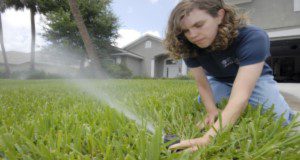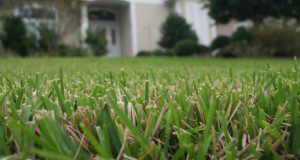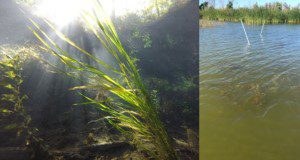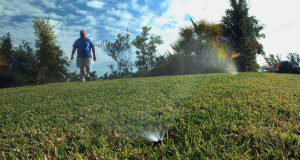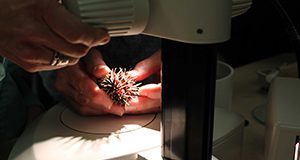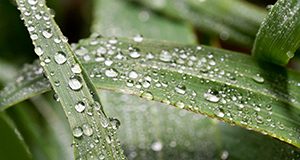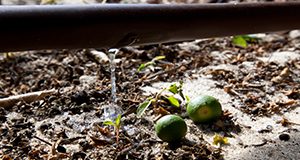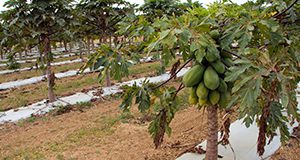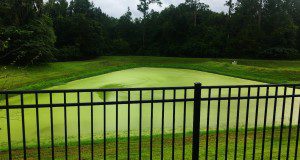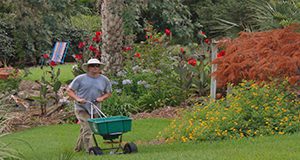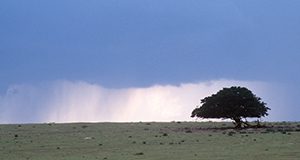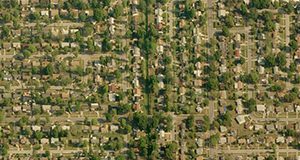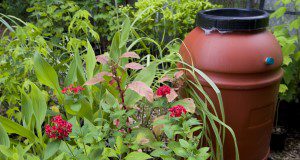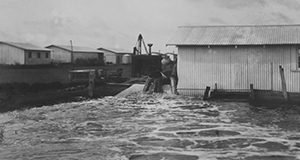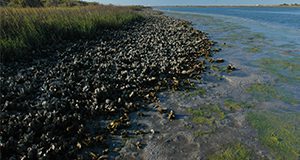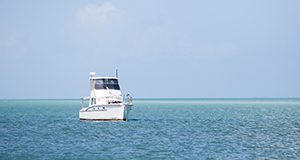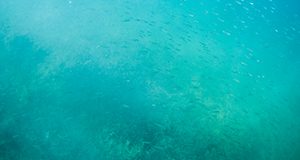Extension communication efforts can be made more effective when following a strategic communication plan. To guide a strategic communication effort, it is imperative to have purposeful messaging along with an understanding of your target audience and communication channel. This new 3-page document, published by the UF/IFAS Department of Agricultural Education and Communication, presents a synthesis of literature highlighting best communication practices in regard to water conservation efforts. Written by Jacqueline Aenlle and Laura A. Sanagorski Warner.
https://edis.ifas.ufl.edu/wc366
Category: Water
Landscaping on or near Septic Drain Fields
Septic systems are common throughout most rural areas, and their care and maintenance are essential to the health of people, wildlife, livestock, agricultural commodities, and water resources. One way to ensure optimal performance of your septic system is to landscape appropriately near the drain field. The purpose of this new 3-page publication of the UF/IFAS Department of Soil and Water Sciences is to provide landscape management guidance for septic system drain fields. Information presented here will be useful for homeowners, landscape management professionals, and Extension agents who work in horticulture, natural resources, agriculture, and family services. Written by Whitney C. Elmore, William Lester, James Moll, Andrea Albertin, and Mary Lusk.
https://edis.ifas.ufl.edu/ss687
A Comparison of Planting Techniques for Submerged Aquatic Vegetation
Submerged aquatic vegetation has numerous benefits for aquatic ecosystems, from improving water quality to providing important habitat that supports a diverse food web. This new 6-page publication of the UF/IFAS Department of Soil and Water Sciences describes the breadth of options available to managers who wish to plant SAV at new locations. Because all methods have both benefits and drawbacks, and because all planting locations have different (often unknown) challenges for plant survival, managers may choose to try multiple methods to increase the likelihood for success. Written by Laura Reynolds, Carrie Reinhardt Adams, Enrique Latimer, Charles W. Martin, Christine Rohal, and Jodi Slater.
https://edis.ifas.ufl.edu/ss685
An Overview of Key Soil Nitrogen Cycling Transformations
Although nitrogen (N) is one of the most abundant elements in the biosphere, it is generally at levels that are limiting for optimum plant growth and crop production in Florida soils. To maintain adequate N levels in Florida soils without having detrimental environmental side effects, one must understand and manage N cycling transformations and processes. This new 5-page article, published by the UF/IFAS Department of Soil and Water Sciences, provides an overview of the N cycle by describing key N transformations that result in soils gaining or losing N. The biotic and abiotic processes that govern these transformations are described, as well as practical examples of these transformations in Florida soils. Written by Clayton J. Nevins, Sarah L. Strauss, and Patrick Inglett.
https://edis.ifas.ufl.edu/ss684
Diagnostic Methods for the Comprehensive Health Assessment of the Long-Spined Sea Urchin, Diadema antillarum
This 55-page document contains a wealth of information on the long-spined sea urchin, which is an important animal in coral reef ecosystems. The publication discusses diagnostic methods for Diadema antillarum and provides reporting forms for laboratory and diagnostic work. Written by Ruth Francis-Floyd, Jan Landsberg, Roy Yanong, Yasu Kiryu, Shirley Baker, Deborah Pouder, William Sharp, Gabriel Delgado, Nicole Stacy, Tom Waltzek, Heather Walden, Roxanna Smolowitz, and Greg Beck, and published by the UF/IFAS Veterinary Medicine—Large Animal Clinical Sciences Department, May 2020.
https://edis.ifas.ufl.edu/vm244
How to Avoid Common Problems with Leaf Wetness Sensor Installation and Maintenance
Leaf wetness duration is an essential input in disease prediction models and decision support systems in Florida and elsewhere. Incorrect installation or lack of regular maintenance of leaf wetness sensors may lead to errors in plant disease risk monitoring and negative impacts on yield. This 7-page publication provides detailed guidelines for the proper installation and maintenance of leaf wetness sensors and describes the most common problems found in field installations as well as potential solutions. Written by T. B. Onofre, C. W. Fraisse, N. A. Peres, and J. McNair, and published by the UF/IFAS Department of Agricultural and Biological Engineering, February 2020.
https://edis.ifas.ufl.edu/ae538
Basic Tips for Designing Efficient Irrigation Systems
As freshwater resources become increasingly scarce and droughts become more frequent, there is a need for efficient use of water resources. Designing efficient irrigation systems and equipment will not only save money but also conserve water. This 10-page fact sheet discusses factors to consider when designing irrigation systems. Written by Haimanote K. Bayabil, Kati W. Migliaccio, Michael Dukes, and Laura Vasquez, and published by the UF/IFAS Department of Agricultural and Biological Engineering, February 2020.
https://edis.ifas.ufl.edu/ae539
ET-Based Irrigation Scheduling for Papaya (Carica papaya) in Florida
Three irrigation scheduling methods (set schedule, ET-based, and tensiometer-based) were tested for papaya production in south Florida. ET-based irrigation scheduling was found to conserve water effectively. This 6-page document primarily focuses on the ET-based irrigation scheduling techniques for papaya under Florida conditions. Written by Haimanote K. Bayabil, Jonathan H. Crane, Kati W. Migliaccio, Yuncong Li, and Fredy Ballen, and published by the UF/IFAS Department of Agricultural and Biological Engineering, March 2020.
https://edis.ifas.ufl.edu/ae540
Sources and Transformations of Nitrogen in Urban Landscapes
With 80% of Florida’s residents living within 10 miles of the coast, Florida’s aquatic resources are directly affected by urbanization. The intent of this new 6-page publication of the UF/IFAS Department of Soil and Water Sciences is to describe the urban nitrogen cycle for a nontechnical audience. Ultimately, this document is intended for individuals working in urban environments and concerned about nutrient pollution and water quality issues, but do not have a technical background and want to improve their understanding of nitrogen cycling. Written by Alexander J. Reisinger, Mary G. Lusk, and Ashley R. Smyth.
https://edis.ifas.ufl.edu/ss681
How to Properly Dispose of Unwanted Medications
Properly disposing of expired or unused medications can help reduce the prevalence of prescription drug abuse in Florida. It also helps prevent accidental ingestion by children or pets, helps prevent accidentally taking the wrong medication, and prevents medications from entering water sources. This new 3-page publication of the UF/IFAS Department of Soil and Water Sciences provides some dos and don’ts for disposing of your medications. Written by Alexander J. Reisinger.
https://edis.ifas.ufl.edu/ss680
Urban Fertilizer Ordinances in the Context of Environmental Horticulture and Water Quality Extension Programs: Frequently Asked Questions
Excess nitrogen (N) and phosphorus (P) in water bodies are a leading cause of water quality degradation statewide. More than 50 Florida counties and municipalities now have formal fertilizer ordinances, which in some cases include fertilizer blackouts, or bans on the usage of N and P fertilizers during certain times of the year. This 8-page document provides information on the underlying issues of fertilizer use, with an emphasis on an urban setting, and outlines the current state of the science on urban fertilizers and water quality in Florida. Written by Michael D. Dukes, Lisa Krimsky, Mary Lusk, Laurie Trenholm, Bryan Unruh, Michelle Atkinson, and Rao Mylavarapu, and published by the UF/IFAS Department of Agricultural and Biological Engineering, February 2020.
https://edis.ifas.ufl.edu/ae534
What Does Florida Weather during the Past 20 Years Look Like?: Florida Weather Represented by the Florida Automated Weather Network (FAWN)
This 8-page document gives an overview of Florida temperature and rainfall during the past 20 years based on historical FAWN data to provide information about the temporal and spatial trends of Florida weather and the frequency and size of extreme weather events such as heavy rainfall and drought. This document also investigates the characteristics of drought and heavy rainfall in relation to hurricanes and tropical storms. Written by Satbyeol Shin, Young Gu Her, Geraldina Zhang, and William Lusher, and published by the UF/IFAS Department of Agricultural and Biological Engineering, January 2020.
https://edis.ifas.ufl.edu/ae537
Residential Irrigation Water Costs in Osceola County and Orange County, Florida
Interest in understanding water use and irrigation costs has risen in recent years. This case study is a 5-page evaluation of water use and associated costs for residential landscape irrigation in Osceola County and Orange County, Florida. Homeowners in central Florida can use the results to assess their water consumption and bills in relation to similar homes in the area. Written by Nick Taylor, Tricia Kyzar, Pierce Jones, and Kaitlin O. Robb Price, and published by the UF/IFAS Department of Agricultural and Biological Engineering, December 2019.
https://edis.ifas.ufl.edu/ae536
Floridians' Engagement in Landscape Best Practices to Protect Water Resources: Information from a 2018 Survey
Extension programs are most effective when informed by a deep understanding of the target audience. To guide programs in Florida’s managed landscapes, especially pertaining to water quality and conservation, faculty from the UF/IFAS Center for Landscape Conservation and Ecology conduct an annual statewide survey. The survey gathers data that includes common landscape elements, neighborhood characteristics, engagement in irrigation and fertilizer best practices, and learning preferences. This new 5-page publication of the UF/IFAS Department of Agricultural Education and Communication presents highlights from the 2018 statewide survey with recommendations for how to use the information. Written by Laura A. Warner, Esen Momol, Claire Lewis, Tom Wichman, Wendy Wilber, and A. J. Reisinger.
https://edis.ifas.ufl.edu/wc345
Hurricane Preparedness for Forage Crops in the Southeast United States
This 4-page document provides information on preparing forage crops, conserved forage, and grazing areas for potential hurricane damage and alleviating hurricane damage on forage crops and grazing lands in the Southeast United States, with an emphasis on the Florida peninsula and Gulf Coast. Written by José C. B. Dubeux, Jr. and Edward K. Twidwell, and published by the UF/IFAS Agronomy Department, November 2019.
http://edis.ifas.ufl.edu/ag439
Cetaceans 4th Grade Curriculum–Lesson 9: How Do Whales Stay Warm?
This 9-page document is the ninth lesson in the Cetaceans 4th Grade Curriculum. It will help students investigate the roles that blubber, body shape, and body size play in preventing heat loss in marine mammals. Written by Maia Patterson McGuire and Ruth Francis-Floyd, and published by the UF/IFAS Veterinary Medicine–Large Animal Clinical Sciences Department, June 2019.
http://edis.ifas.ufl.edu/vm234
Cetaceans 4th Grade Curriculum–Lesson 16: North Atlantic Right Whales and Ship Strikes
This 7-page document is the sixteenth lesson in the Cetaceans 4th Grade Curriculum. It will help students learn why ship strikes are a threat to North Atlantic right whale survival, and what conservation measures are in place to reduce this threat. Written by Maia Patterson McGuire, Jessica Hardy, Brenda Cannaliato, and Ruth Francis-Floyd, and published by the UF/IFAS Veterinary Medicine–Large Animal Clinical Sciences Department, June 2019.
http://edis.ifas.ufl.edu/vm241
Cetaceans 4th Grade Curriculum–Lesson 4: How Big Are Cetaceans?
This 12-page document is the fourth lesson in the Cetaceans 4th Grade Curriculum. It will help students gain an understanding of the size of different cetaceans through engaging activities. Written by Maia Patterson McGuire and Ruth Francis-Floyd, and published by the UF/IFAS Veterinary Medicine–Large Animal Clinical Sciences Department, June 2019.
http://edis.ifas.ufl.edu/vm229
Cetaceans 4th Grade Curriculum–Lesson 12: Identifying Individual North Atlantic Right Whales
This 4-page document is the twelfth lesson in the Cetaceans 4th Grade Curriculum. It will help students learn about the New England Aquarium’s right whale database and match photographs of individual right whales. Written by Maia Patterson McGuire, Ruth Francis-Floyd, and Brenda Cannaliato, and published by the UF/IFAS Veterinary Medicine–Large Animal Clinical Sciences Department, June 2019.
http://edis.ifas.ufl.edu/vm237
Cetaceans 4th Grade Curriculum–Lesson 8: Food Chains
This 6-page document is the eighth lesson in the Cetaceans 4th Grade Curriculum. It will help students identify components of baleen and toothed whale food chains and trace energy flow. Written by Maia Patterson McGuire, Brenda Cannaliato, and Ruth Francis-Floyd, and published by the UF/IFAS Veterinary Medicine–Large Animal Clinical Sciences Department, June 2019.
http://edis.ifas.ufl.edu/vm233
